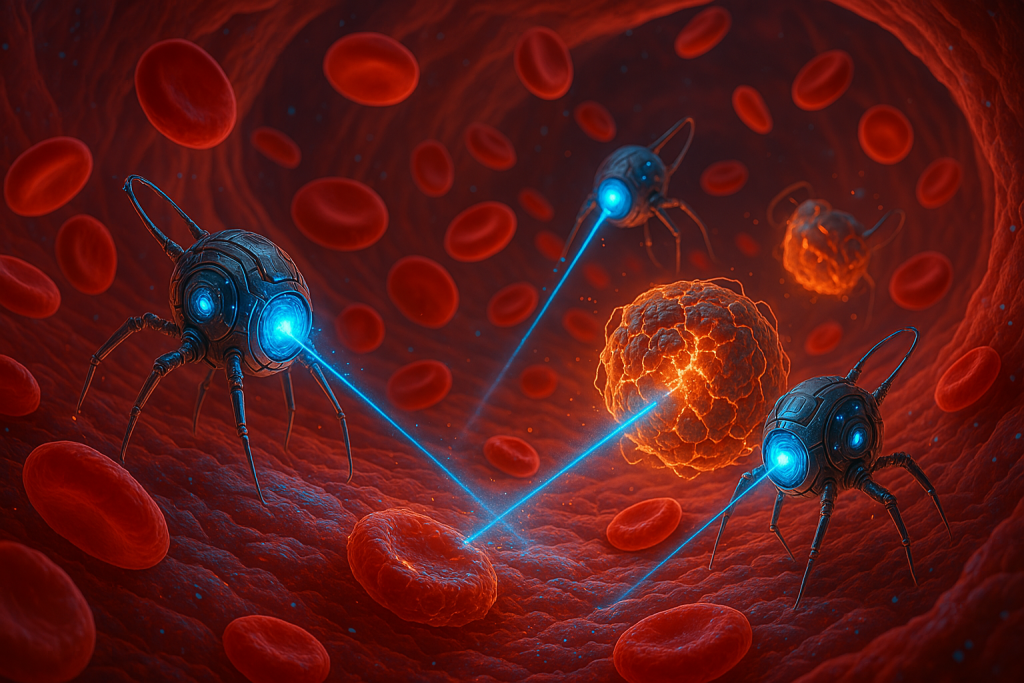Unlocking Tomorrow: Understanding the Science and Practice of Life Extension
Imagine blowing out 100 candles on your birthday cake, not frail and confined, but vibrant, sharp, and actively engaged in life. For centuries, extending human lifespan has been the stuff of myths and legends. Today, however, it’s rapidly transitioning into the realm of scientific possibility, especially in the context of life extension Arizona. We stand at a fascinating juncture where advancements in biology, medicine, and technology are converging, offering tantalizing prospects for not just longer lives, but healthier, more fulfilling later years. The conversation is shifting from merely adding years to life, to adding life to years through life extension practices.

This field, broadly known as life extension, encompasses the scientific study and practical application of strategies aimed at slowing, halting, or even reversing the aging process to extend both lifespan (how long we live) and, crucially, healthspan (how long we live in good health). It’s distinct from simply promoting general wellness; life extension actively seeks to intervene in the fundamental mechanisms of aging itself. The growing interest is undeniable, fueled by breakthroughs in our understanding of biology and a collective desire to maximize our potential. Here in Arizona, with pioneering institutions and a growing wellness community, we find ourselves uniquely positioned within this exciting landscape of life extension Arizona. Arizona life extension education and healthcare is expanding daily.
In Arizona, the life extension Arizona community is vibrant and growing, providing resources and knowledge to those interested in extending their lifespan and healthspan.

This article will serve as your comprehensive guide to the world of life extension. We will delve into the core concepts, explore the underlying biology of aging, review proven methods and promising interventions, discuss emerging technologies, highlight relevant connections to Arizona, and consider the important ethical dimensions. Our journey will reveal that life extension is a rapidly evolving field combining scientific research, medical interventions, lifestyle modifications, and emerging technologies that hold the potential to significantly extend human healthspan and lifespan.
I. Understanding Life Extension: Concepts and Definitions
Life extension Arizona initiatives focus on proactive strategies aimed at preventing age-related decline and promoting longevity.
To navigate this field effectively, it’s crucial to understand the terminology. While often used interchangeably, longevity generally refers to the characteristic of living a long life, often achieved through good genetics and healthy habits. Life extension, however, implies a more proactive, interventionist approach aimed at exceeding current average or even maximum lifespans by targeting the aging process directly.
Experts in Arizona are examining innovative life extension methods that could redefine our relationship with aging, particularly within the context of life extension Arizona.
A critical distinction lies between lifespan and healthspan. Lifespan is the total number of years a person lives. Healthspan refers to the period of life spent in good health, free from debilitating chronic diseases and functional decline. Historically, increases in average lifespan were primarily due to reduced infant mortality and infectious disease control. The modern life extension movement focuses squarely on extending healthspan, ensuring that any additional years gained are years of vitality and quality.
Humans have sought extended youth and life for millennia, from ancient myths of immortality elixirs to early (and often misguided) rejuvenation therapies. However, the scientific understanding of aging has dramatically evolved, particularly in the last few decades. We’ve moved from viewing aging as an inevitable, passive decline to recognizing it as a complex biological process influenced by genetics, environment, and lifestyle – a process that might be modifiable. Key terms you’ll encounter include geroscience (the study of the biology of aging), senescence (cellular aging), telomeres (protective caps on chromosomes), and healthspan interventions.
While the absolute maximum human lifespan is still debated, with the validated record standing around 122 years, the scientific consensus suggests biological limits exist. However, the primary goal for most researchers and practitioners isn’t immortality, but compression of morbidity – shrinking the period of ill health at the end of life and maximizing the duration of healthy, active years.
II. The Biology of Aging and Life Extension Science

Telomeres shorten as we age.
Why do we age? At its core, aging is a progressive decline in physiological function, increasing vulnerability to disease and death. Geroscience has identified several interconnected biological processes, often termed the “Hallmarks of Aging,” that drive this decline and serve as potential targets for intervention:
- Cellular Senescence: Cells stop dividing but don’t die, instead releasing inflammatory signals that damage surrounding tissues. Accumulation of senescent cells contributes to age-related diseases.
- Telomere Shortening: Telomeres are protective caps at the ends of our chromosomes. They shorten with each cell division, eventually triggering senescence or cell death when critically short.
- Mitochondrial Dysfunction: Mitochondria, the powerhouses of our cells, become less efficient with age, producing less energy and more damaging reactive oxygen species (free radicals).
- Oxidative Stress: An imbalance between free radicals (unstable molecules that damage cells) and the body’s antioxidant defenses leads to cumulative damage to DNA, proteins, and lipids.
- Inflammation (Inflammaging): Chronic, low-grade inflammation increases with age, contributing to nearly every age-related disease, from heart disease to neurodegeneration.
- Epigenetic Changes: These are alterations in gene expression (which genes are turned on or off) without changing the underlying DNA sequence. Age-related epigenetic drift can impair cellular function.
- Other Hallmarks: Include loss of proteostasis (impaired protein quality control), deregulated nutrient sensing, stem cell exhaustion, and altered intercellular communication.

Alter Your Biological Clock with Life Extension Protocols
Modern technologies, including genomics, proteomics, and bioinformatics, are accelerating our understanding of these processes. While genetics play a role (certain genes are associated with exceptional longevity), research increasingly highlights the significant impact of environmental factors and lifestyle choices on how quickly these aging processes manifest. Our genes may load the gun, but environment and lifestyle often pull the trigger. Understanding these biological underpinnings is crucial because it allows scientists to develop targeted strategies to slow down or mitigate these specific drivers of aging.
III. Proven Methods for Life Extension
While cutting-edge technologies garner headlines, the foundation of any effective life extension strategy rests on proven lifestyle and dietary principles. These interventions work by impacting the fundamental aging pathways discussed above.
A. Nutrition and Dietary Approaches
What you eat profoundly influences how you age. Several dietary strategies have shown promise:
- Caloric Restriction (CR): Consistently eating fewer calories (typically 20-40% less than ad libitum intake) without malnutrition is the most robust method known to extend lifespan in many animal models. It impacts nutrient-sensing pathways and reduces oxidative stress. However, strict CR is difficult for humans to maintain.
- CR Mimetics: These are compounds (like metformin or resveratrol, discussed later) or dietary patterns that aim to mimic the beneficial effects of CR without severe calorie reduction.
- Intermittent Fasting (IF) & Time-Restricted Eating (TRE): These involve cycling between periods of eating and voluntary fasting (e.g., 16/8 method, 5:2 diet, alternate-day fasting). IF/TRE activates cellular cleanup processes (autophagy), improves insulin sensitivity, and reduces inflammation. TRE, restricting eating to a specific window each day (e.g., 8-10 hours), is often considered more sustainable.
- Longevity Diets: Diets like the traditional Mediterranean diet (rich in vegetables, fruits, nuts, seeds, olive oil, fish; low in red meat and processed foods) and the Okinawa diet are consistently associated with longer, healthier lives in population studies. They emphasize whole foods and anti-inflammatory components.
- Key Nutrients: Adequate intake of fiber, polyphenols (from colorful plants), healthy fats (omega-3s), and essential vitamins and minerals supports cellular health and combats aging processes.
- Anti-inflammatory Eating: Prioritizing foods that reduce chronic inflammation (like fatty fish, berries, leafy greens, nuts, spices like turmeric) and avoiding pro-inflammatory foods (processed foods, sugary drinks, excessive saturated/trans fats) is critical.
Research in Arizona is paving the way for new insights into how life extension strategies can be tailored to individual needs.
B. Physical Activity and Exercise

Movement is medicine. Regular physical activity is non-negotiable for extending healthspan:
- Lifespan Impact: Consistent exercise is strongly linked to reduced risk of cardiovascular disease, diabetes, certain cancers, dementia, and overall mortality.
- Optimal Types: A balanced routine is key, incorporating:
- Cardiovascular/Aerobic Exercise: (Brisk walking, running, swimming, cycling) Improves heart health, mitochondrial function, and circulation.
- Strength Training: (Weightlifting, resistance bands, bodyweight exercises) Crucial for preserving muscle mass (combating sarcopenia), maintaining bone density, and supporting metabolic health.
- Flexibility and Mobility: (Stretching, yoga, Tai Chi) Maintains range of motion, prevents injury, and supports functional independence.

- Frequency/Intensity: Aim for at least 150 minutes of moderate-intensity or 75 minutes of vigorous-intensity aerobic activity per week, plus muscle-strengthening activities1 at least two days per week.2 Consistency is more important than occasional heroic efforts.
- Combatting Sedentary Behavior: Even with dedicated exercise sessions, prolonged sitting is an independent risk factor. Incorporate regular movement throughout the day (standing breaks, short walks).
C. Lifestyle and Environmental Factors
Beyond diet and exercise, other daily habits significantly influence aging:
- Sleep Optimization: Aim for 7-9 hours of quality sleep per night. Sleep is critical for cellular repair, hormone regulation, memory consolidation, and clearing metabolic waste from the brain. Practice good sleep hygiene (consistent schedule, dark/cool room, limit screens before bed).

Quality Sleep Is Essential.
- Stress Management: Chronic stress accelerates aging through hormonal disruption and inflammation. Implement techniques like mindfulness, meditation, deep breathing, yoga, spending time in nature, or engaging in hobbies.
- Social Connection: Strong social ties and community involvement are surprisingly powerful predictors of longevity and well-being. Meaningful relationships buffer stress and provide emotional support.
- Environmental Toxin Avoidance: Minimize exposure to pollutants, heavy metals, pesticides, and endocrine-disrupting chemicals found in some plastics, personal care products, and processed foods.
- Hormesis: Mild, intermittent stressors (like exercise, fasting, or heat/cold exposure) can trigger adaptive responses that strengthen cellular resilience and defense mechanisms – a concept called hormesis.
- Cognitive Engagement: Keep your brain active through learning new skills, reading, puzzles, creative pursuits, and social interaction to build cognitive reserve and reduce dementia risk.
IV. Supplementation and Nutraceuticals for Life Extension
While lifestyle forms the bedrock, targeted supplementation can potentially provide additional support by addressing specific pathways of aging or compensating for dietary gaps. However, it’s crucial to approach supplements with an evidence-based mindset and prioritize quality. Always consult a healthcare professional before starting new supplements.

Some popular nutraceuticals studied for potential longevity benefits include:
- NAD+ Precursors (NMN, NR): Nicotinamide adenine dinucleotide (NAD+) is a vital coenzyme involved in energy metabolism, DNA repair, and cellular signaling. Levels decline significantly with age. Nicotinamide Mononucleotide (NMN) and Nicotinamide Riboside (NR) are precursors that the body can use to synthesize NAD+. Research (mostly animal, some human) suggests potential benefits for metabolism, mitochondrial function, and potentially slowing aspects of aging. Human trials are ongoing to confirm efficacy and long-term safety.

Very Promising Life Extension Supplement
- Resveratrol and Pterostilbene: Polyphenols found in grapes, berries, and peanuts. Resveratrol gained fame for potentially activating sirtuins (longevity-linked proteins) and mimicking some effects of caloric restriction. Pterostilbene is a related compound with potentially better bioavailability. Evidence in humans is still developing.
- Curcumin: The active compound in turmeric, known for its potent anti-inflammatory and antioxidant properties. It may help modulate pathways involved in inflammaging. Bioavailability can be an issue; formulations often include piperine (black pepper extract) to enhance absorption.
- Omega-3 Fatty Acids (EPA & DHA): Found in fatty fish and algae oil, these fats are crucial for reducing inflammation, supporting brain health, and maintaining cardiovascular function.
- Vitamin D and K2: Vitamin D is essential for bone health, immune function, and potentially modulating inflammation. Vitamin K2 works synergistically with D to ensure calcium is deposited in bones rather than arteries. Many people are deficient in Vitamin D.
- Coenzyme Q10 (CoQ10) and PQQ: CoQ10 is critical for mitochondrial energy production and acts as an antioxidant. Levels decline with age and statin use. Pyrroloquinoline quinone (PQQ) also supports mitochondrial function.
- Spermidine: A polyamine found in foods like aged cheese, mushrooms, and whole grains. It induces autophagy (cellular cleanup) and has shown lifespan-extending effects in animal models. Human research is emerging.
Evaluating Supplements: Look for reputable brands that undergo third-party testing for purity and potency (e.g., NSF, USP). Be wary of exaggerated claims. Supplementation should be personalized based on individual needs, lab testing, and health goals, ideally guided by a knowledgeable practitioner. Organizations like the Life Extension Foundation (LEF) provide extensive information and often rank supplements based on available evidence, though specific recommendations require careful personal assessment. The future likely holds more personalized nutraceutical approaches based on genetic and biomarker data.
V. Medical and Clinical Approaches to Life Extension
Beyond lifestyle and supplements, clinical interventions offer more direct ways to monitor, prevent, and potentially reverse age-related decline.

Find a Life Extension M.D.
A. Preventive Medicine and Early Detection
The best offense is a good defense. Advanced diagnostics allow for early identification of risks and proactive management:
- Biomarker Testing: Goes beyond standard blood work to measure markers of inflammation (hs-CRP, fibrinogen), metabolic health (fasting insulin, HbA1c), nutrient levels (Vitamin D, Omega-3 index), hormone levels, and even markers of biological age (e.g., methylation clocks, telomere length testing – though interpretation is complex).
- Genetic Testing: Can identify predispositions to certain age-related diseases or reveal variants associated with longevity, informing personalized prevention strategies.
- Advanced Imaging: Tools like full-body MRI, CT calcium scoring (for heart disease risk), or advanced ultrasound can detect pathology at very early stages.
- Personalized Health Risk Assessment: Integrating data from biomarkers, genetics, lifestyle, and family history to create a tailored prevention plan.
- Functional Medicine: An approach that seeks to identify and address the root causes of dysfunction and disease, often employing detailed testing and personalized interventions.
B. Hormone Optimization
Hormone levels naturally decline with age, contributing to symptoms like fatigue, muscle loss, cognitive changes, and reduced libido. Optimization aims to restore levels to a more youthful, optimal range:
- Bioidentical Hormone Replacement Therapy (BHRT): Uses hormones structurally identical to those the body produces (e.g., estradiol, progesterone, testosterone). When prescribed and monitored carefully by experienced clinicians, BHRT can alleviate menopause/andropause symptoms and potentially offer protective benefits for bone, brain, and cardiovascular health. Controversy exists, and risks/benefits must be individualized.
- Thyroid Optimization: Ensuring optimal thyroid function (not just “within normal range”) is crucial for energy metabolism and overall vitality.
- Growth Hormone (GH): Levels decline significantly with age. Replacement is controversial due to potential side effects and cost, but peptide therapies that stimulate the body’s own GH release (see below) are gaining interest.
- Testosterone/Estrogen Balance: Maintaining appropriate levels and balance is key for both men and women for muscle, bone, mood, cognitive function, and sexual health.
- Peptide Therapies: Using specific peptide sequences (short chains of amino acids) to signal particular actions in the body, such as stimulating GH release (e.g., Sermorelin, Ipamorelin), improving tissue repair (e.g., BPC-157), or enhancing immune function. This is a rapidly developing area.
C. Regenerative Medicine
This cutting-edge field focuses on repairing or replacing damaged tissues and organs to restore function:

Stem Cell Research is Advancing Rapidly.
- Stem Cell Therapies: Using the body’s own master cells (or donor cells) to regenerate tissues damaged by injury, disease, or aging. Applications are being explored for arthritis, heart disease, neurological conditions, and more. Regulatory oversight (e.g., by the FDA) is critical; be wary of unproven claims.
- Exosome Treatments: Using extracellular vesicles secreted by stem cells that contain growth factors and signaling molecules to promote tissue repair without using whole cells.
- Platelet-Rich Plasma (PRP): Concentrating platelets from a patient’s own blood and injecting them into injured areas (joints, tendons) to stimulate healing.
- VSEL Therapy: Very Small Embryonic-Like Stem Cells are a specific type of pluripotent stem cell found in adult tissues. Research is ongoing, but clinical applications and regulatory status require careful investigation. (Note: Specific FDA stance requires up-to-date search).
- Tissue Engineering & 3D Bioprinting: Aiming to create functional tissues and organs in the lab for transplantation. While still largely experimental, progress is being made.
Many regenerative therapies are still considered experimental, and patients should research the evidence, regulatory approval status (e.g., FDA guidelines), and provider qualifications carefully. Clinical trials are essential for validating safety and efficacy.
VI. Emerging Technologies and Future Directions
The future of life extension looks even more science fiction-like, with technologies poised to potentially revolutionize how we age:
- Senolytics and Senomorphics: Senolytics are drugs designed to selectively clear senescent cells from the body. Senomorphics aim to suppress the harmful inflammatory signals these cells release. Early clinical trials are underway for various age-related conditions.
- Gene Therapy and Genetic Engineering: Technologies like CRISPR allow for precise editing of the genome. Potential applications include correcting genetic defects that cause premature aging syndromes or even modifying genes associated with longevity pathways. Ethical considerations are paramount.
- Nanotechnology: Developing nanoscale devices and materials for targeted drug delivery, diagnostics, and tissue repair at the cellular level.

Nanobots in the Near Future Repairing Cells.
- Artificial Intelligence (AI): AI is accelerating longevity research by analyzing vast datasets (genomic, clinical, lifestyle) to identify aging biomarkers, discover new drug targets, and personalize interventions.
- Organ Regeneration and Replacement: Advances in stem cells, tissue engineering, and 3D bioprinting may eventually allow for the repair or replacement of failing organs. Xenotransplantation (using animal organs) is also being explored.
- Young Blood Factors / Plasma Exchange: Research suggesting factors in young blood can rejuvenate older tissues has led to controversial studies involving plasma exchange or infusion. More rigorous research is needed to determine safety and efficacy. Identifying the specific beneficial factors is a key goal.
- Cryonics and Biostasis: The practice of preserving legally deceased individuals at ultra-low temperatures with the hope that future medical technology might be able to revive and repair them. Arizona is notably home to the Alcor Life Extension Foundation in Scottsdale, one of the largest cryonics organizations globally. This remains highly speculative but represents an ultimate bet on future technological capability.
While breakthroughs seem perpetually “just around the corner,” realistic timelines are hard to predict. Many of these technologies face significant scientific, technical, regulatory, and ethical hurdles.
VII. Life Extension Resources in Arizona
Arizona has emerged as a significant hub for individuals interested in longevity and life extension, fostering a unique ecosystem of research, clinical practice, and forward-thinking organizations.
- Pioneering Organizations: Scottsdale is home to the Alcor Life Extension Foundation, a world leader in cryonics, offering human cryopreservation services. Its presence underscores Arizona’s role at the speculative frontier of life extension.
- Academic Research: The University of Arizona houses initiatives focused on aging research, including potentially the Coit Center for Longevity (verify specific current initiatives). Universities across the state contribute to fundamental geroscience.
- Clinical Practices: Major metropolitan areas like Phoenix, Scottsdale, and Tucson boast a growing number of clinics specializing in anti-aging medicine, functional medicine, hormone optimization, and regenerative therapies. These range from preventative wellness centers to advanced regenerative medicine specialists.
- Regenerative Medicine: The state has clinicians offering therapies like PRP, stem cell treatments (within regulatory guidelines), and exosome therapy, often focused on orthopedic applications, aesthetics, and wellness.
- Wellness Community: Arizona’s health-conscious population supports numerous supplement retailers, wellness centers, yoga studios, and organic food markets that align with longevity lifestyles.
- Research and Trials: Local universities and private clinics may participate in clinical trials for new supplements, drugs, or therapies related to aging.
With the growing interest in life extension, Arizona is becoming a focal point for innovative treatments and perspectives.
Utilizing life extension strategies, Arizona residents are increasingly prioritizing their health and longevity.
Finding Qualified Providers: When seeking services in Arizona (or anywhere), due diligence is crucial. Look for licensed healthcare professionals with specific training and certifications in age management medicine, functional medicine, or regenerative medicine (e.g., A4M, IFM). Verify credentials, ask about experience, understand the evidence behind recommended therapies, and be wary of unrealistic promises or high-pressure sales tactics. Patient testimonials can be insightful, but shouldn’t replace rigorous vetting. Because specific clinic information and research initiatives change, prospective patients should conduct current searches and consultations to find suitable providers.
VIII. Ethical and Societal Considerations
The prospect of radical life extension raises profound ethical and societal questions that we must grapple with:
- Justice and Access: Would longevity treatments be available only to the wealthy, exacerbating existing inequalities? How can equitable access be ensured?
- Environmental Impact: What are the resource implications (food, water, energy, housing) of significantly larger, longer-living populations?
- Social Structures: How would family dynamics, inheritance, career paths, social security systems, and generational transitions change if people lived healthy lives for 120 years or more?
- Economic Considerations: While healthier populations might reduce healthcare costs per person-year, overall costs could rise with more people living longer. How would economies adapt?
- Meaning and Purpose: Would drastically extended lifespans change our perception of life’s purpose, urgency, and milestones?
- Quality vs. Quantity: Is the goal simply more years, or more good years? How do we ensure extended life doesn’t mean extended frailty or dependency?
- Philosophical/Religious Views: Different belief systems hold diverse views on the naturalness and desirability of intervening in the human lifespan.
These aren’t easy questions, and ongoing societal dialogue is essential to navigate the future responsibly, balancing individual desires with collective well-being.
IX. Creating Your Personal Life Extension Strategy
Embarking on a life extension journey is a marathon, not a sprint. It requires a personalized, proactive, and patient approach:
- Assess Your Baseline: Understand your current health status through comprehensive check-ups, biomarker testing, and honest self-assessment of lifestyle habits (diet, exercise, sleep, stress).
- Identify Risks & Priorities: Based on your assessment, family history, and genetic information (if available), identify your key areas of focus – perhaps it’s metabolic health, inflammation, or cognitive function.
- Build Your Protocol: Start with the foundations: optimize nutrition, commit to regular exercise, prioritize sleep, and manage stress. These provide the biggest return on investment.
- Consider Supplementation: Research potential supplements relevant to your priorities, focusing on quality and evidence. Discuss options with a knowledgeable healthcare provider. Start low, go slow.
- Explore Clinical Options: If appropriate, investigate preventive screenings, hormone optimization, or regenerative therapies with qualified practitioners, carefully weighing risks and benefits.
- Work with Professionals: Partner with forward-thinking doctors or health coaches who understand functional and age management medicine. Avoid practitioners making miracle claims.
- Track Progress: Monitor key biomarkers, functional measures (strength, endurance), and how you feel. Be prepared to adjust your approach based on results and new research.
- Budget & Prioritize: Life extension interventions can range from free (sleep, basic exercise) to very expensive. Determine your budget and prioritize interventions with the strongest evidence base and relevance to your needs.
- Set Realistic Expectations: Significant biological age reversal isn’t yet proven science. Focus on slowing aging, compressing morbidity, and enhancing healthspan. Progress takes time and consistency.
- Stay Informed: This field moves fast. Follow reputable sources (scientific journals, established longevity organizations, expert podcasts/books) to stay updated, but maintain healthy skepticism.
Conclusion: Taking Control of Your Biological Destiny
The quest to extend healthy human life is no longer confined to the pages of science fiction. It’s a dynamic and rapidly advancing field grounded in an ever-deepening understanding of the biology of aging. From foundational lifestyle choices in diet, exercise, sleep, and stress management to targeted supplements, advanced diagnostics, hormone optimization, and groundbreaking regenerative and future technologies, we have an unprecedented array of tools available to influence our healthspan.
While immortality remains elusive, the potential to live significantly longer, healthier, and more vibrant lives is becoming increasingly tangible. Arizona sits at an interesting crossroads in this field, home to pioneering organizations and a growing number of resources for those seeking to optimize their longevity.
The power to influence your aging trajectory lies largely within your hands. By embracing evidence-based strategies, working with knowledgeable professionals, staying informed, and making consistent efforts, you can take meaningful steps on your personal life extension journey. The future promises even more exciting developments, potentially reshaping not just individual lives, but society itself. The journey starts now – take control, invest in your health, and unlock your potential for a longer, healthier tomorrow.
Resources and Further Reading (General Categories):
- Recommended Books: Explore works by leading researchers like Dr. David Sinclair (“Lifespan”), Dr. Valter Longo (“The Longevity Diet”), Dr. Peter Attia (“Outlive”). (Verify specific relevant titles).
- Reputable Websites: Life Extension Foundation (LEF.org), National Institute on Aging (NIA.nih.gov), American Academy of Anti-Aging Medicine (A4M.com), Institute for Functional Medicine (IFM.org).
- Professional Organizations: Seek practitioners certified by A4M or IFM.
- Arizona Resources: Conduct targeted searches for “functional medicine doctors,” “anti-aging clinics,” “regenerative medicine specialists” in Phoenix, Scottsdale, Tucson. Check University of Arizona websites for updates on longevity research centers (e.g., Coit Center). Research Alcor Life Extension Foundation if interested in cryonics.
- Scientific Literature: Use databases like PubMed (pubmed.ncbi.nlm.nih.gov) to find studies on specific interventions (requires scientific literacy).
Disclaimer: This article is for informational purposes only and does not constitute medical advice. Consult with qualified healthcare professionals for personalized guidance.3
As life extension options expand in Arizona, residents can explore various therapies supportive of their longevity journey.
For those in Arizona, the life extension movement promotes a holistic approach to aging.
Engaging in life extension practices can empower individuals in Arizona to take charge of their health and longevity.
In communities across Arizona, life extension advocates are fostering a culture of health and longevity.
The commitment to life extension in Arizona reflects a broader societal shift towards healthier, longer lives.
Life extension practices are being integrated into wellness programs throughout Arizona.
The life extension movement is gaining traction in Arizona, with more resources available to those interested in enhancing their healthspan.
As Arizona continues to advance in life extension research, individuals are better equipped to make informed health decisions.
Life extension efforts in Arizona emphasize the importance of community support in achieving longevity goals.
With dedicated focus on life extension, Arizona is at the forefront of innovative health solutions.
Life extension practitioners in Arizona are committed to fostering a deeper understanding of aging and health.
Efforts in Arizona aim to integrate life extension concepts into mainstream health practices.
//